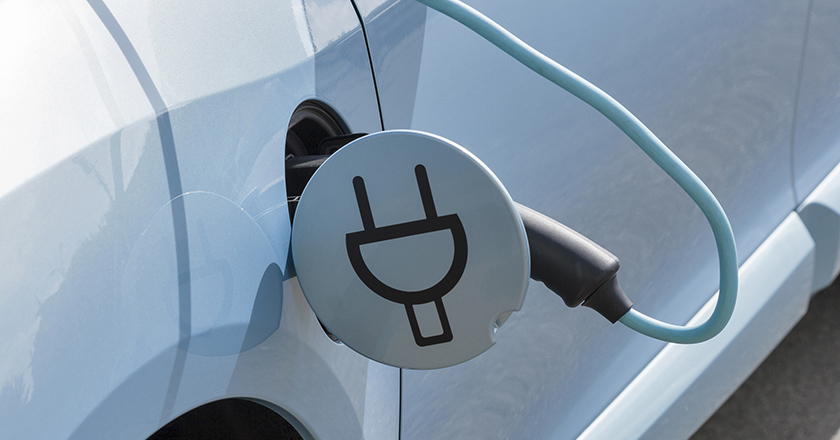EV aggregator breaking through the current situation of wasted solar power
More than 120 countries and regions worldwide have set the common goal of becoming carbon neutral by 2050 to solve the greenhouse gas problem that is causing climate change. In Japan, transportation and logistics account for about 20% of CO2 emissions. To mitigate CO2 emissions, the government is actively advocating the adoption of EVs in various vehicle categories, including passenger cars, trucks, buses, and more.
The key to utilizing EVs is how to charge them cheaply. Conversely, there is also a potential business model that allows you to generate profit by discharging surplus electricity from EV batteries and supplying it elsewhere. This concept is referred to as the EV aggregator business. Aggregator means “one who aggregates” or “one who organizes.” In other words, an EV aggregator business involves buying and selling electricity through agreements with numerous EV owners to charge and discharge their batteries.
As electricity rates vary throughout the day, profits can be generated, for instance, by storing electricity at night when rates are lower and selling it during the day when they are higher. If an EV aggregator with contracts with numerous EV owners, can remotely and flexibly control the charging and discharging of EVs, a business can be established in which electricity is bought and sold depending on the situation. Naturally, the amount of electricity that can be stored in an individual EV is not substantial. However, if EV adoption becomes widespread and contracts can be established with numerous owners, this has the potential to become a significant business.
Although Japan is striving to adopt a significant amount of renewable energy, there is, in fact, a phenomenon occurring in many sunny regions such as Kyushu, where solar power-generated electricity goes to waste during periods of low electricity demand, such as holidays. Effective utilization requires storage facilities, but the introduction of high-capacity energy storage batteries can pose cost challenges. Conversely, utilizing EVs does not necessitate new equipment, thus aiding in cost reduction. Solar power generation is influenced by weather conditions, so when clouds cover the sun and power generation decreases abruptly, electricity can be drawn from the EV to replenish it, ensuring a stable electricity supply.
Aggregating 1 million EVs could generate tens of millions of yen a day
EV aggregator initiatives are currently being promoted globally and are becoming a business, especially in Europe and the United States. Regarding renewable energy, Japan introduced an aggregator license system in April 2022 to facilitate the utilization of EVs, storage batteries, and various power generation facilities for renewable energy. Those who expect to aggregate more than 1,000 kW of electricity from sources other than power generators and supply it to various businesses must submit a prior notification. In other words, you do not need to be a power generator to participate in the EV aggregator business.
Remote control of EV charging and discharging has already started to be adopted in the real world, and charging is about to be commercialized. However, when it comes to discharging, it must be acknowledged that the path to full establishment is still quite distant. While charging at a low price is a welcome benefit for EV owners, there can be concerns when it comes to discharging, as it may potentially limit the availability of the vehicle when you need to go out. If we can clearly show how much discharge benefits EV owners, the situation is likely to change.
EVs are charged and discharged by connecting them to a plug. EV aggregators will exchange electricity through plugs, so it is important to know when they plug their EVs in to make the business viable. To investigate this, my laboratory received information on the Road Traffic Census from the Ministry of Land, Infrastructure, Transport and Tourism and analyzed it. The Road Traffic Census is a census of roads that captures the state of roads and their actual usage throughout the country. It provides data such as the time of day, distance traveled, and the number of times vehicles are started within a day.
What the analysis revealed is that, for example, on holidays, about 50% of passenger cars remain parked throughout the day, while about 30% are used for two trips a day – once in the morning and once in the evening for drop-offs and pick-ups or commuting to and from work. It was also observed that in most cases, people leave their homes in the morning, each trip lasting no longer than an hour, with an average driving distance of about 9 km. From there, we examined what percentage of EVs plug in at various times of the day and calculated probabilities. For instance, if there were 100 vehicles, by 6 AM, 10 vehicles would be on trips, while the remaining 90 vehicles would be plugged in. We statistically determined the time periods during which EVs can be plugged in. Based on this information, we ran a simulation assuming, for example, that electricity is charged, or purchased, when electricity prices are low and discharged, or sold, when prices are high. Although this is just an estimate, the simulation revealed that if 30% of the passenger cars in the Kyushu area, roughly 1 million vehicles, were to become EVs, it could potentially result in profits of tens of millions of yen in a single holiday.
Waste-free utilization of renewable energy towards carbon neutrality
The first major challenge in realizing EV aggregators is the widespread adoption of EVs. Although EVs offer much lower fuel costs than gasoline-powered cars, most passenger car drivers in Japan cover shorter distances and are less affected by the rising cost of gasoline than those in other countries with longer average driving distances. Hence, the relatively low demand for an EV transition can be seen as one of the factors hindering the widespread adoption of this initiative. Furthermore, the single-charge driving range of EVs is shorter than that of gasoline-powered cars, and the number of EV charging stations, which serve as replacements for gas stations in Japan, is still limited. This raises concerns for many people about the possibility of running out of power during long-distance driving.
Recently, a new EV model equipped with an exceptionally large battery capacity was launched in the United States. This is an electric truck designed for long-distance travel, whereas in Japan, the market currently offers mainly small electric trucks designed for short-distance travel. How much battery capacity would be required to make it feasible as a long-distance truck? Currently, my laboratory is working with students on a survey of trucks. We are researching the driving characteristics of the trucks, including their daily mileage and available charging time, to assess the feasibility of implementation in Japan.
The development of infrastructure, including power transmission and distribution lines, is also crucial. Even if one EV car per household were to become widespread, with the current electrical grid in Japan, it would likely be impossible for all households to charge their EVs simultaneously. Using them for commuting and starting to charge them simultaneously in the evening to night after returning home can potentially lead to various issues. Furthermore, there is the issue of where to install EV charging stations, so we would like to develop our research to include urban planning perspectives.
In any case, the goal for now is to increase the use of renewable energy sources as much as possible on the path to achieving carbon neutrality. If renewable energy can be used without waste through the EV aggregator business, we can expect it to make a significant contribution. To promote the widespread adoption of EVs, it is important to highlight their benefits and challenges, effectively conveying their potential. If expanded further, the EV aggregator initiative could become a way to align the SDGs with business.
* The information contained herein is current as of September 2023.
* The contents of articles on Meiji.net are based on the personal ideas and opinions of the author and do not indicate the official opinion of Meiji University.
* I work to achieve SDGs related to the educational and research themes that I am currently engaged in.
Information noted in the articles and videos, such as positions and affiliations, are current at the time of production.


